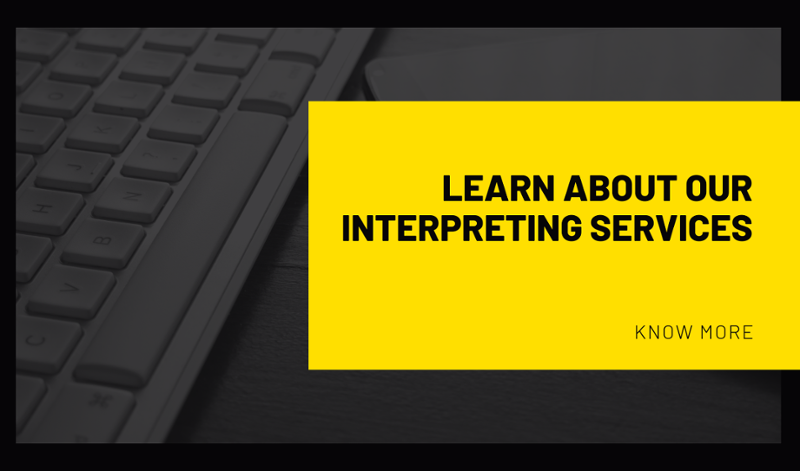Not every event will only feature speakers communicating in the same language as the participants. This is especially true when it comes to lectures, conferences and corporate events.
Although English is a prerequisite in many professional areas, not everyone understands it so, having a simultaneous interpreting service may well be essential. Not to mention that, although English is usually the most used foreign language in corporate events and conferences, it may happen that a stakeholder or a panellist speaks another not so common language.
Allowing a communicative environment in which all the involved are able to understand each other is one more reason to hire the simultaneous interpreting service from a language services provider.
What is a simultaneous interpreting service?
Simultaneous interpreting is also known as conference interpreting or simultaneous translation. It is a form of translation in which what is said by the speaker is translated simultaneously by an interpreter and conveyed to the participant through a sound system with headphones. During the presentation the participant uses earphones to understand what is being exposed.
The interpreters are usually in a strategic location with sound insulation so they don’t struggle to understand what is being said. They work in pairs and take turns every half hour to avoid wear and tear, and to keep the quality of the interpretation.
How does a simultaneous interpreting service work?
Events that use simultaneous interpreting are usually those that involve speakers of various nationalities or corporate events and conferences between executives. It is used not to interfere in the duration of the event.
For interpreting to be conducted with quality, there must be sound insulated booths, a transmission centre, transmitters, wireless translation receivers, headphones and microphones.
How is simultaneous interpreting conducted in events?
- The interpreters are seated in the booths with acoustic insulation, they have a panoramic view of the venue. This allows them to observe the speaker's’ body language and gestures, their interaction with the audience, slides or videos and any other details that may contribute to a better translation.
- The booth is insulated to prevent the sound from inside it to disrupt the speaker or even participants who will not make use of the simultaneous interpreting.
- The speaker should be advised to use the microphone at all times, because only that information will be translated to the participants, including possible questions, and that is the only way the interaction with the audience can be ensured.
- Inside the booth the interpreter has before him a microphone in which he will deliver in one language what is said in another language and he headphones to hear what is said by the speaker.
- Interpreters take turns every half hour to allow themselves some rest since simultaneous interpreting causes mental wear and, if there is no pause, the quality may be jeopardized.
- What the interpreters say is transmitted to an interpreter console, which also receives the sound from the speaker's microphone. The interpreter console is what connects interpreter, speaker and participants.
- When the intervener speaks the interpreter listens through the headphones and translates simultaneously through the microphone in front of him.
- This interpretation is conveyed to a transmitter and from that to the multichannel receivers the participants are using. And so the participants get, through the headphones, the communication the interpreter is conveying.
Simultaneous interpreting is perfect for multilingual events and to make it possible without jeopardising quality and compromising the speakers or the participants, it is necessary to make use of good AV equipment and professional interpreters.
This text was not written by a native English speaker, but by a language lover. However, all our language services are always provided by native speakers.
ABOUT US
Since 1998 providing translation, transcription, interpretation and subtitling services, AP | Portugal Tech Language Solutions is a Portuguese translation company certified by the International Quality Standard ISO 17100, with a translation agency in Lisbon and another in Porto. Recognised internationally for its software and website localisation technology skills, SEO and consulting, it invests enthusiastically in the development of partnerships and cooperation in Luanda, Maputo, Bissau, Praia, São Tomé, as well as in Brazil and anywhere in the world where your organization may need a partner for the African, Brazilian and European Portuguese language.
Related Articles:
In an increasingly multilingual world, communication must be instantaneous, accurate, and...
Related Articles:
Effective communication is the foundation of success in international business, legal...
Related Articles:
In today's globalised and digitally connected world, accessibility and inclusion are no...






Comments